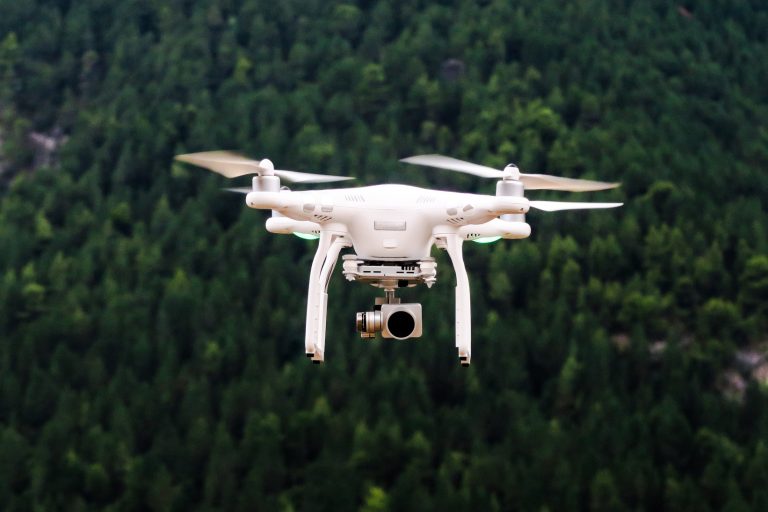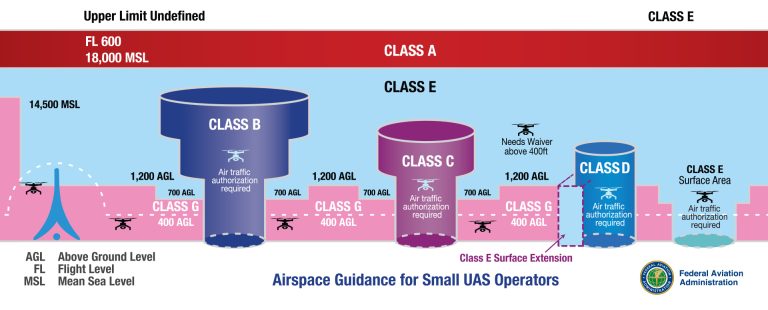How High Can a Drone Fly?
When asked how high a drone can fly, our first thought should be safety, which is tied closely to Federal Aviation Administration (FAA) rules. The general rule of thumb is a drone can fly 400 feet above ground level (with many caveats and a few exceptions). A few notes on physical altitude limitations of actual drone flight capability are below the following notes on regulations.

Licensed versus Recreational
How high a drone can fly is tied to different zones of airspace and what you’re authorized to do. One of those distinctions is whether or not you’re licensed. Theoretically, operation of any drone up to 55 pounds requires an unmanned pilot’s license that, between tests and fees, can easily cost more than a cheap drone, itself. This is according to the FAA’s 14 CFR “Part 107”, also called the Small UAS Rule. Section 336 or the Special Rule for Model Aircraft was created to allow casual hobbyists to operate drones and RC planes without a Part 107 license (provided it is for pure recreation and fun, with no utilitarian or commercial purpose). This was called a “carve out” regarding Part 107. Section 336 was appealed and replaced with 49 USC 44809 which serves the same purpose but with additional restrictions and definitions.
How high a drone can fly legally depends, in some cases, whether or not you’re licensed. For example, there are considerations regarding buildings or other structures, allowing pilots to fly higher than 400 feet when flying above these structures, provided it is an area for which manned aircraft pilots also adjust their altitude accordingly, with the same structures in mind. This consideration, however, is reserved for Part 107-licensed drone pilots, whereas recreational fliers must remain 400 feet or less above ground level (at best, with further restrictions in some areas).
Zones
Additional rules and restrictions apply to how high a drone can fly depending upon whether it is within Uncontrolled Airspace, Controlled Airspace, what zone or Class (such as Class B etc.) and/or if it’s near an airport. You are encouraged to visit the FAA’s Resources to stay safe and compliant.
Physics
While most drones have a firmware limit restricting how high they can fly to 400 feet, and further software caps existing above 1640 feet intended for special authorization, various makes and models may have different physical caps on theoretical capability. A unit’s design, as well as air temperature (and thus density) would both come into play, but it’s generally estimated most would cap out between 6000 and 7000 feet, which is around half the record for a particular drone that reached an altitude 11,150 feet.

